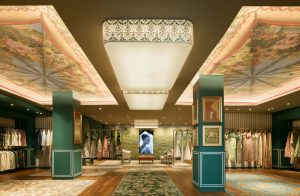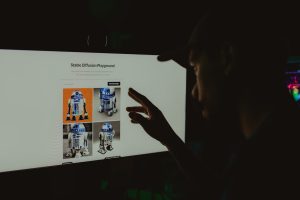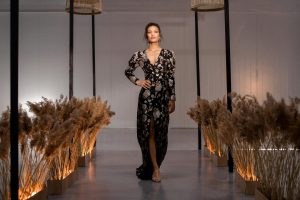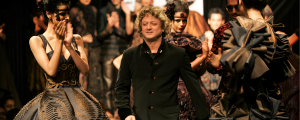“In the courts of kings, fashion became theatre, and every garment a stage upon which power performed its eternal drama.”
Dinis Guarda

Baroque Brilliance And Rococo Romance (1600-1789)
The Baroque and Rococo periods transformed fashion into spectacle, establishing the court as fashion’s primary theatre. This era developed the relationship between fashion and performance that continues to influence contemporary design whilst creating the first truly global fashion system.
In the glittering courts of European monarchy, fashion achieved unprecedented theatrical grandeur that transformed dress into performance art. The Baroque and Rococo periods established the relationship between fashion and spectacle that continues to influence contemporary design whilst creating the first truly systematic approach to seasonal fashion change.
Baroque fashion emphasised drama, movement, and spectacular display that transformed the human body into a stage for the performance of power and cultural refinement. The development of the mantua—a loose gown that could be arranged in countless configurations—provided women with garments designed for constant movement and visual interest. Male court dress achieved equal complexity through elaborately decorated coats, ornate waistcoats, and fashion accessories that proclaimed their wearers’ wealth and cultural sophistication.
The rise of Rococo fashion coincided with the growing influence of the French aristocracy in the 18th century. Paris, as the fashion capital of Europe, became the epicenter of this stylistic revolution. Women’s clothing became increasingly elaborate, with styles such as the robe à la franç opulence, elaborate designs, and a whimsical approach to design. Men’s fashion also experienced significant evolution as tailcoats, breeches, and hand embroidered waistcoats replaced the more somber attire of the Baroque period. Overall, there was an emphasis on opulence and artistic expression, transforming clothing into a visual representation of wealth and social status.
Rococo fashion refined Baroque excess into elegant sophistication that celebrated curves, asymmetry, and delicate decoration inspired by natural forms. The period developed countless accessories that remain fashion staples: fans that enabled subtle communication, beauty patches that transformed the face into an artwork, elaborate hairstyles that required professional maintenance and proclaimed their wearers’ leisure and wealth. Fashion became inseparable from performance, with specific garments required for different times of day, seasons, and social occasions.

Rococo fashion refined Baroque excess into elegant sophistication.
The period established fashion as a commercial industry through innovations that created modern retail and marketing approaches. Fashion dolls—elaborately dressed miniatures known as Pandora dolls—carried Paris styles throughout Europe and beyond, establishing French fashion leadership that persists today. Early fashion magazines began documenting seasonal changes, creating the cyclical approach to style that governs contemporary fashion. The rise of the marchande de modes—specialist retailers who assembled complete fashionable outfits—created fashion retail as a distinct profession requiring sophisticated understanding of style, quality, and customer psychology.
Baroque Grandeur
Baroque fashion emphasised drama and movement. The development of the mantua and elaborate male court dress created silhouettes designed for spectacular display. Fashion became inseparable from court ritual, with specific garments required for different ceremonial occasions.
Rococo Refinement
The 18th century refined Baroque excess into elegant sophistication. Rococo fashion celebrated curves, asymmetry, and delicate decoration. The period developed many accessories that remain fashion staples—fans, beauty patches, and elaborate hairstyles that required professional maintenance. The term “Rococo” itself derives from the French word rocaille, referring to shell-like ornamentation that was often used in architecture and design during this time. This artistic influence quickly translated into fashion, as French aristocrats favoured elaborate styles that symbolised wealth, sophistication, and cultural refinement.
Fashion’s First Industry
The period established fashion as a commercial industry. The development of fashion dolls (Pandora dolls) spread Paris styles internationally, whilst fashion magazines began documenting seasonal changes. The rise of the marchande de modes created fashion retail as a distinct profession.
Key Benchmarks
| Period | Innovation | Significance |
| 1650 | Mantua development | Structured female silhouettes |
| 1700 | Fashion dolls | International style communication |
| 1750 | Rococo decoration | Asymmetrical design principles |
| 1770 | Fashion magazines | Style documentation begins |
| 1785 | Pre-revolutionary simplicity | Democratic fashion influences |
Dinis Guarda, with Jasmeen Dugal
Dinis Guarda is an author, academic, influencer, serial entrepreneur, and leader in 4IR, AI, Fintech, digital transformation, and Blockchain. Dinis has created various companies such as Ztudium tech platform; founder of global digital platform directory businessabc.net; digital transformation platform to empower, guide and index cities citiesabc.com and fashion technology platform fashionabc.org. He is also the publisher of intelligenthq.com, hedgethink.com and tradersdna.com. He has been working with the likes of UN / UNITAR, UNESCO, European Space Agency, Davos WEF, Philips, Saxo Bank, Mastercard, Barclays, and governments all over the world.
With over two decades of experience in international business, C-level positions, and digital transformation, Dinis has worked with new tech, cryptocurrencies, driven ICOs, regulation, compliance, and legal international processes, and has created a bank, and been involved in the inception of some of the top 100 digital currencies.
He creates and helps build ventures focused on global growth, 360 digital strategies, sustainable innovation, Blockchain, Fintech, AI and new emerging business models such as ICOs / tokenomics.
Dinis is the founder/CEO of ztudium that manages blocksdna / lifesdna. These products and platforms offer multiple AI P2P, fintech, blockchain, search engine and PaaS solutions in consumer wellness healthcare and life style with a global team of experts and universities.
He is the founder of coinsdna a new swiss regulated, Swiss based, institutional grade token and cryptocurrencies blockchain exchange. He is founder of DragonBloc a blockchain, AI, Fintech fund and co-founder of Freedomee project.
Dinis is the author of various books. He has published different books such “4IR AI Blockchain Fintech IoT Reinventing a Nation”, “How Businesses and Governments can Prosper with Fintech, Blockchain and AI?”, also the bigger case study and book (400 pages) “Blockchain, AI and Crypto Economics – The Next Tsunami?” last the “Tokenomics and ICOs – How to be good at the new digital world of finance / Crypto” was launched in 2018.
Some of the companies Dinis created or has been involved have reached over 1 USD billions in valuation. Dinis has advised and was responsible for some top financial organisations, 100 cryptocurrencies worldwide and Fortune 500 companies.
Dinis is involved as a strategist, board member and advisor with the payments, lifestyle, blockchain reward community app Glance technologies, for whom he built the blockchain messaging / payment / loyalty software Blockimpact, the seminal Hyperloop Transportations project, Kora, and blockchain cybersecurity Privus.
He is listed in various global fintech, blockchain, AI, social media industry top lists as an influencer in position top 10/20 within 100 rankings: such as Top People In Blockchain | Cointelegraph https://top.cointelegraph.com/ and https://cryptoweekly.co/100/ .
Between 2014 and 2015 he was involved in creating a fabbanking.com a digital bank between Asia and Africa as Chief Commercial Officer and Marketing Officer responsible for all legal, tech and business development. Between 2009 and 2010 he was the founder of one of the world first fintech, social trading platforms tradingfloor.com for Saxo Bank.
He is a shareholder of the fintech social money transfer app Moneymailme and math edutech gamification children’s app Gozoa.
He has been a lecturer at Copenhagen Business School, Groupe INSEEC/Monaco University and other leading world universities.










